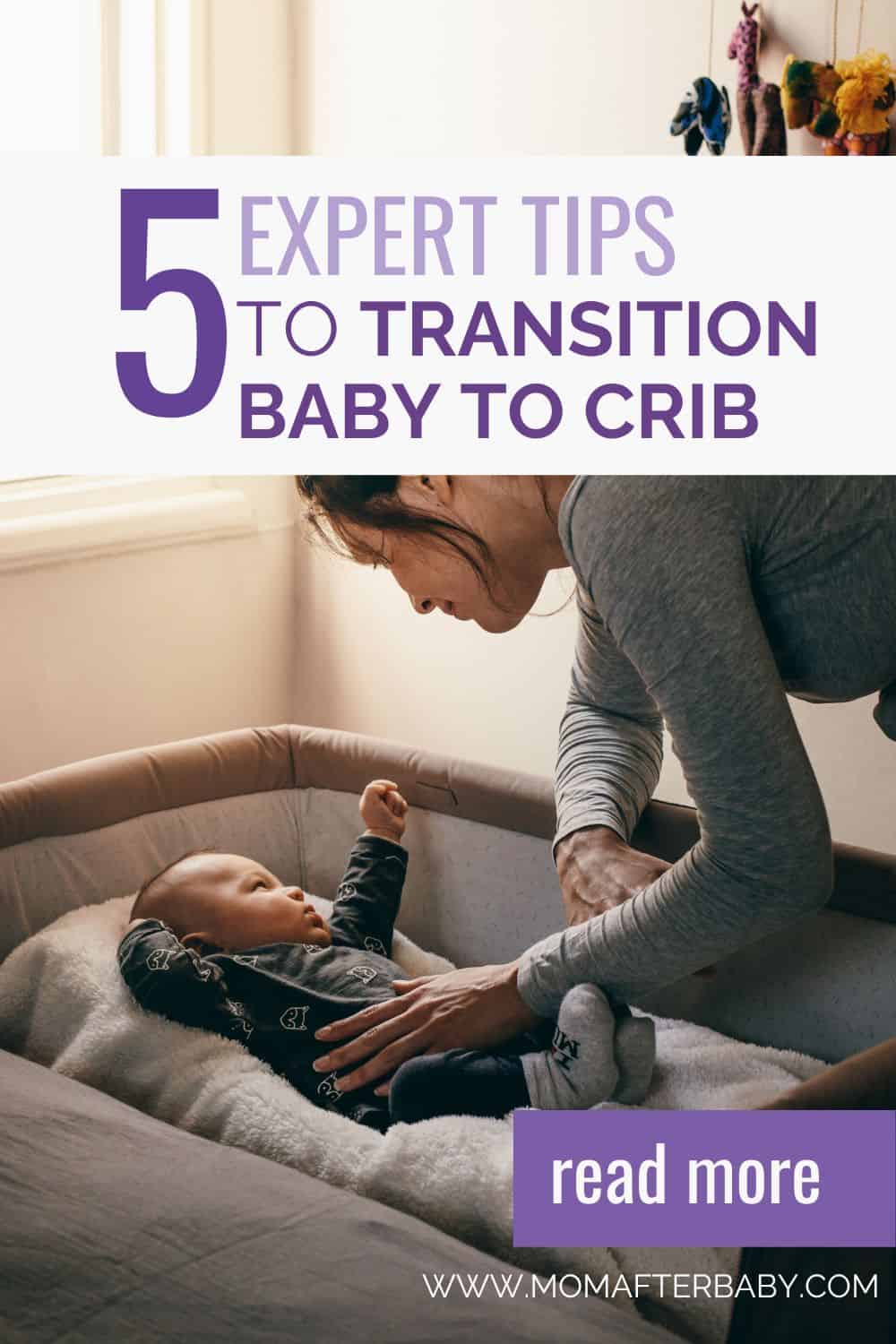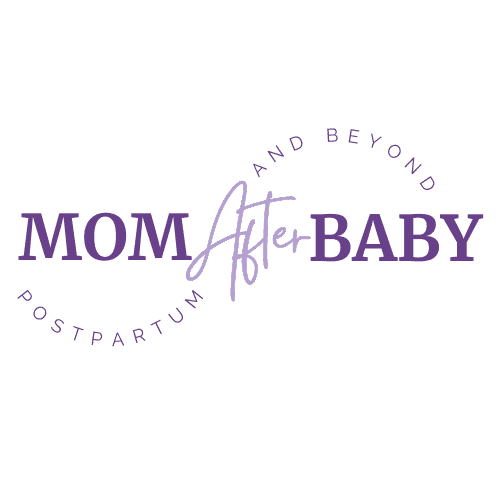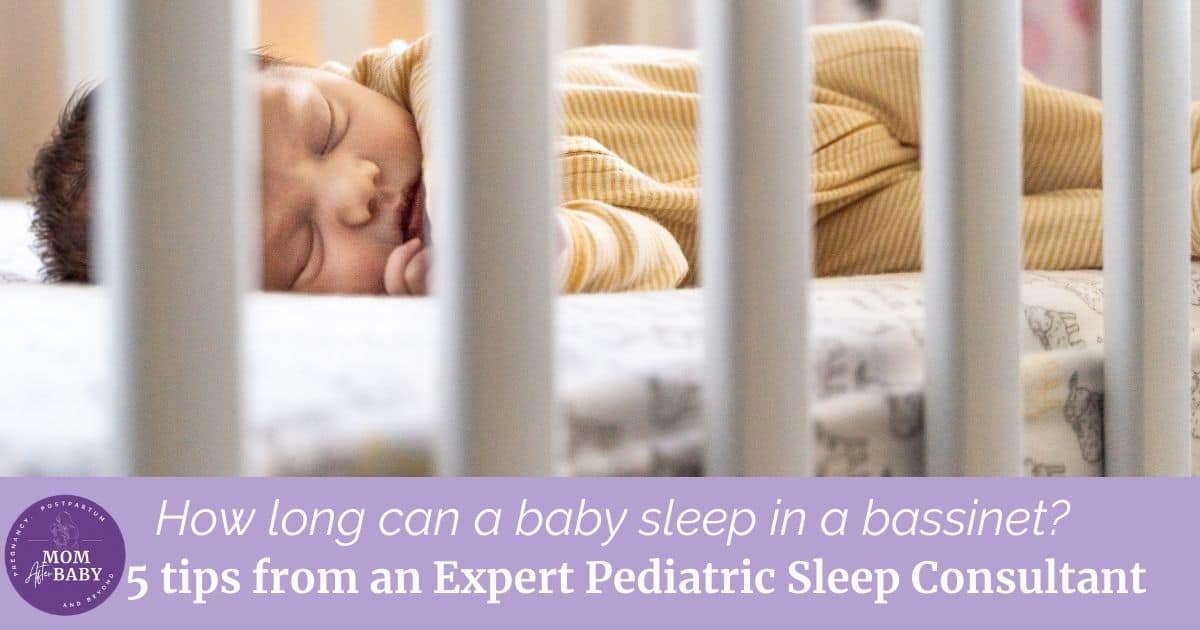How Long Can a Baby Sleep in a Bassinet? 5 Tips to Transition to a Crib Peacefully
This post may contain affiliate links that I may receive a commission from if you click & buy. In addition, the information on this site is NOT intended to be medical advice. See my full policy for more information.
Welcoming a newborn into the world brings immense joy, but it also presents all sorts of baby sleep challenges for parents. Among the essential considerations is where your baby will sleep during those early months. I always recommend opting for bassinets for a newborn baby as they offer a safe, cozy, and convenient space for them to sleep in.
However, as your baby grows and graduates that “4th trimester”, you may wonder when it’s time to transition from the baby bassinet to a crib. In this blog post, Pediatric Sleep Consultant Eva Klein is going to help you explore the duration a baby can safely sleep in a bassinet and provide five practical tips to help new parents (or seasoned parents) like you transition your little one to a crib peacefully.
When to transition your baby out of their bassinet
While bassinets are amazing for newborn babies to sleep in, your baby can’t sleep in there forever! And while there is no “one-size-fits-all” answer to how long a baby can sleep in a bassinet, most bassinets are suitable for babies up to 3-6 months of age.
Here are some signs your baby might be ready to transition from a bassinet to their crib:
– Your baby no longer fits in the bassinet: When your baby is too tall for the bassinet or he reaches the bassinet’s weight limit, which is often between 15 to 20 pounds, it’s definitely time to move them to a crib. The best way to confirm is by reading your bassinet’s manual for the weight and height limits.
– Your baby is learning how to sit up in the bassinet: This poses a safety hazard because we don’t want your baby accidentally climbing (i.e. falling) out!
– Your baby is suddenly sleeping restlessly and frequently hitting the sides of the bassinet: If your baby seems to be having trouble sleeping comfortably in the bassinet, even though they were previously sleeping comfortably, it might be a sign that they need more space. *Note — using bumper pads (even with mesh sides) is not recommended by the American Academy of Pediatrics.
If your baby isn’t showing you any of these signs, I always recommend leaving your newborn to sleep in the bassinet for as long as they will safely fit. There’s no need to fix what works!
Struggling to understand WHEN your baby should be sleeping?
Learn how to understand your baby’s sleep cues so you can both get better sleep today!
5 Tips to Gradually Transition Your Baby From a Crib to a Bassinet
Transitioning from a bassinet to a crib can be a big change for your baby. To make the process a smoother and less frightening one, while maintaining a safe environment for your baby, here are my top 5 tips for introducing the crib to your baby gradually.
1) Allow Baby Supervised Daytime Crib Play
When you start by allowing your baby to spend some supervised playtime in the crib during the day, it allows them more exposure to the new environment without any expectation or pressure for them to master night sleep.
Playtime for babies 6 months old or less can be: tummy time, looking in a mirror, using a kick-mat, etc…
It’s also a good idea as it will simply help them become familiar with the new environment in a positive, playful, and non-threatening manner.
2) Practice ONE Nap a Day in The Crib
For this step, you’ll practice at least ONE nap a day in the crib while still using the bassinet for nighttime sleep. This way, your little one can gradually adjust to sleeping in the crib during nap time without feeling overwhelmed.
After a few days or weeks, depending on your baby’s comfort level, you can make the full transition to using the crib for both daytime naps and nighttime sleep.
3) Ensure Your Baby’s Sleep Environment is Conducive to Good Quality Sleep
A peaceful and soothing sleep environment can make a significant difference in your baby’s transition to the crib (and sleep in general):
- Make baby’s crib a cozy and inviting sleep space by using soft, breathable bedding (remember, babies typically only need a fitted sheet, no loose bedding or other objects needed).
- Ensure the room temperature is comfortable, ideally on the cooler side.
- Install heavy-duty blackout curtains or blinds so that you don’t have too much natural sunlight beaming through the windows.
- Introduce a white noise machine if you haven’t already to drown out background noise and create a calming, soothing sleep environment.
4) Establish a Consistent Bedtime Routine
A consistent bedtime routine and sleep schedule are essential for promoting healthy sleep habits for your baby. This helps to build consistency and cue your little one that sleep time is coming.
As you transition them to the crib, maintain the same soothing routine they were accustomed to in the bassinet. This could include activities such as a warm bath, gentle massage, reading a bedtime story, or singing a lullaby. By keeping the routine consistent, your baby will associate these activities with sleep and feel comforted as they adjust to their new sleeping arrangement.
5) Start With the Room, Then With the Crib…
To be exact, switch your baby to their new room first, then to their new crib for nighttime.
If you are reading this and intend to continue room sharing (where the baby sleeps in your room), this step isn’t applicable.
But if you are moving your baby from their bassinet in your room to their crib in THEIR room, you can put your baby to sleep in their bassinet in their nursery for a few nights. Then once they become adjusted to sleeping in their new safe place aka, the nursery or their own room, you can move them into the crib.
Additionally, some parents choose to sleep on a separate bed in their baby’s new room for a few nights to help with the adjustment. For some, using a quality baby monitor works just fine to keep a close eye on your baby as they sleep.
How Long Can a Baby Sleep in a Bassinet: The Conclusion
While bassinets are a wonderful place for newborns to sleep safely and comfortably in those early months of life, it’s essential to know the best time for your baby to transition to a crib. Depending on your baby’s weight, overall size, and developmental milestones, he might be able to stay in his bassinet until 6 months of age or even longer.
Understanding the ideal duration for bassinet use and recognizing the signs of outgrowing it can help you make the right decision. It will also help you ensure you’re following safe sleep guidelines. By introducing the crib gradually, creating an optimal sleep environment, and establishing a consistent bedtime routine, you can help your little one peacefully transition to their new sleeping space.
The most important thing to remember is that every baby is unique. So, be patient and attentive to your child’s needs during this transition period (especially in the early weeks when you begin the transition from bassinet to crib). With love, care, and a little time, your baby will happily embrace their crib in a separate room and enjoy many peaceful nights of restful sleep.

Find this post helpful?
Share it on Pinterest
About Eva Klein, Pediatric Sleep Consultant

Eva Klein is a Pediatric Sleep Consultant, owner of My Sleeping Baby, and a mom of 3. She helps
exhausted parents across the globe get higher-quality, more restful sleep through her renowned sleep
courses, private coaching, and corporate seminars. You can watch her free masterclass here called “How
to get your little one consistently sleeping 11-12 hours at night so you can feel like a functioning human
again (even if you feel like you’ve tried everything)”.


